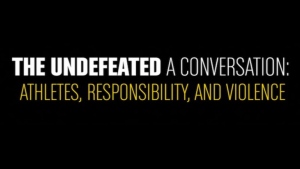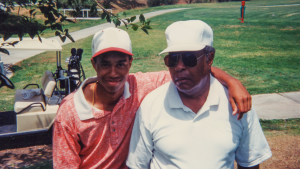Formula E, the world-renowned electric racing car series, is in the midst of its ninth season. The sporting organization prides itself on their sustainable efforts and net zero carbon footprint.
The organization’s 2022 Sustainability Report was recently released, which highlights the efforts from its eighth season. Julia Pallé, the Sustainability Director at Formula E, recently spoke with The Shift to provide insight into how sustainability is integrated into every level of the organization, including the racing cars, partnerships, events, and community impacts.
Hi Julia, thank you so much for taking the time to do this with me. Can you start by telling me your role within Formula E and what that entails?
Julia Pallé: I’m the Sustainability Director at Formula E. That means I drive the strategy and vision around sustainability for the championship. Obviously, this is quite specific because [Formula E] is probably the first purpose-driven sport that was created. Sustainability plays a real strategic role within the championship. We really integrate sustainability at every level of the sport, from the racing cars, to how we work with our racing teams or partners, the way we deliver our events, the way we impact our communities, and so on.
We touch on the three traditional aspects of sustainability that you would expect: environmental protection, social inclusivity — we call [it] social progress — and then economic prosperity.
The season eight sustainability report was released recently, the highlight being the Gen3 car. Can you just talk about how that car is regarded as the most sustainable race car ever built?
It’s really been the fruits of years of work, where we started doing a life-cycle assessment, which is a carbon measurement, on the previous generation of our cars, Gen2, to understand what would be the key contributor of the carbon footprint. The aim [was] to design the new cars, the Gen3, to reduce its carbon footprint, but also [consider] the principle of circular economy.
Obviously, the tires are all recycled at the end, [as well as] the cells, the batteries and the bodywork, but we wanted to take it a step further. Twenty-six percent of the tire materials are coming from natural or more sustainable materials; the cells within the batteries will be repurposed after every other season; and then for the bodywork, it's the first time that you have a mix of linen and recycled carbon fiber brought into the racing cars.
From a sustainability perspective, as well as a technological side, it’s a testing lab because some of these things have never been used in such an intense and demanding environment like racing. It’s a really good learning opportunity and we’re already starting to think about the Gen4 car based on the learnings that we get from these cars.
In the report, it said that The Global Sustainability Benchmark in Sports ranked Formula E as the most sustainable sport in the world in November 2022. How does that ranking reaffirm Formula E's core goals?
It’s obviously very important for us to have a series of independent rankings or certifications that validate we are doing things in the best possible way. It comes back to our purpose, and we were created with sustainability. We cannot admit to being average on this. We have to deliver on our mission and be culturally aligned with who we are and what we stand for.
It’s very important for us to have these external party certifications and legitimacy because the approach in motorsport is that there’s no space for average, it’s always about excellence and pushing yourself to always go above and beyond. But also, we have a mission that is broader than the sport itself. We’re also here to inspire and you need to be leading by example.
Speaking of that carbon-neutral footprint, the report mentioned that there was a 24% emissions reduction from season five to season eight, can you just talk about that?
It’s really the result of all the efforts and roadmaps that we’ve put in place regarding renewable energy use. [Renewable energy] is how we've been engaging our partners, DHL has been the central piece regarding logistics and freight, but also racing teams have really made conscious efforts to reduce their weights and the amount of material they travel with.
Besides the racing, there’s a lot of social change that the organization pushes for. I wanted to touch upon some of those starting with the Take A Breath campaign last season between Formula E and UNICEF. What was that initial goal, and what achievements did you make through that campaign?
That campaign is really a way for us to explain and raise awareness of the common global partnership that we have with UNICEF. We decided to team up because we are both trying to support children in being empowered to fight climate change, which is really the biggest threat that humanity is facing nowadays. Children are the least responsible for climate change, yet the most impacted. We thought that this powerful video to raise awareness with Tom Hiddleston would help us shine a light.
Then there’s something really close to our hearts and our industry, which is air pollution, especially in the heart of cities. It is really like a plague and 90 percent of people around the world breathe air quality that is not safe, according to WHO levels. Most people don’t know that, so we thought it would be really powerful and really captivate the minds of people, especially on the fact that we have a huge issue in our cities. Out of all the solutions that we can implement, changing the way we use mobility and switching to electric vehicles that are zero emissions is a very concrete solution that people can adopt.











